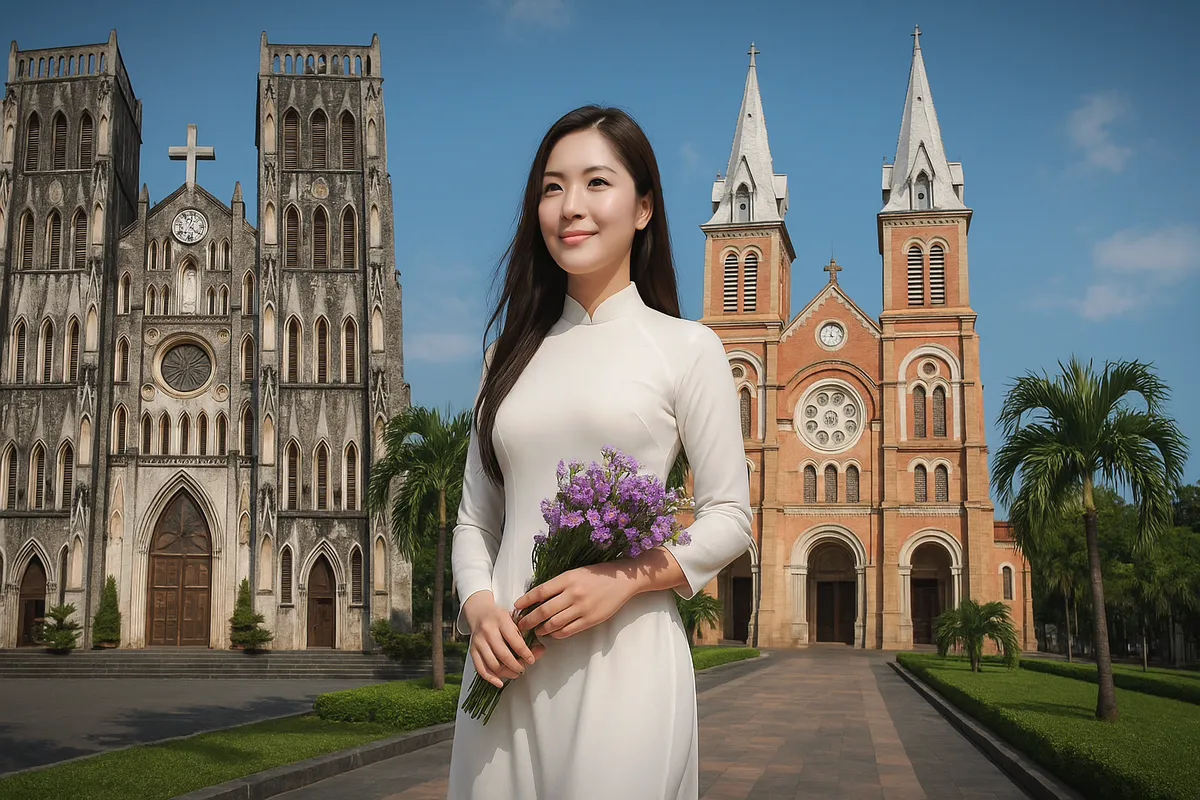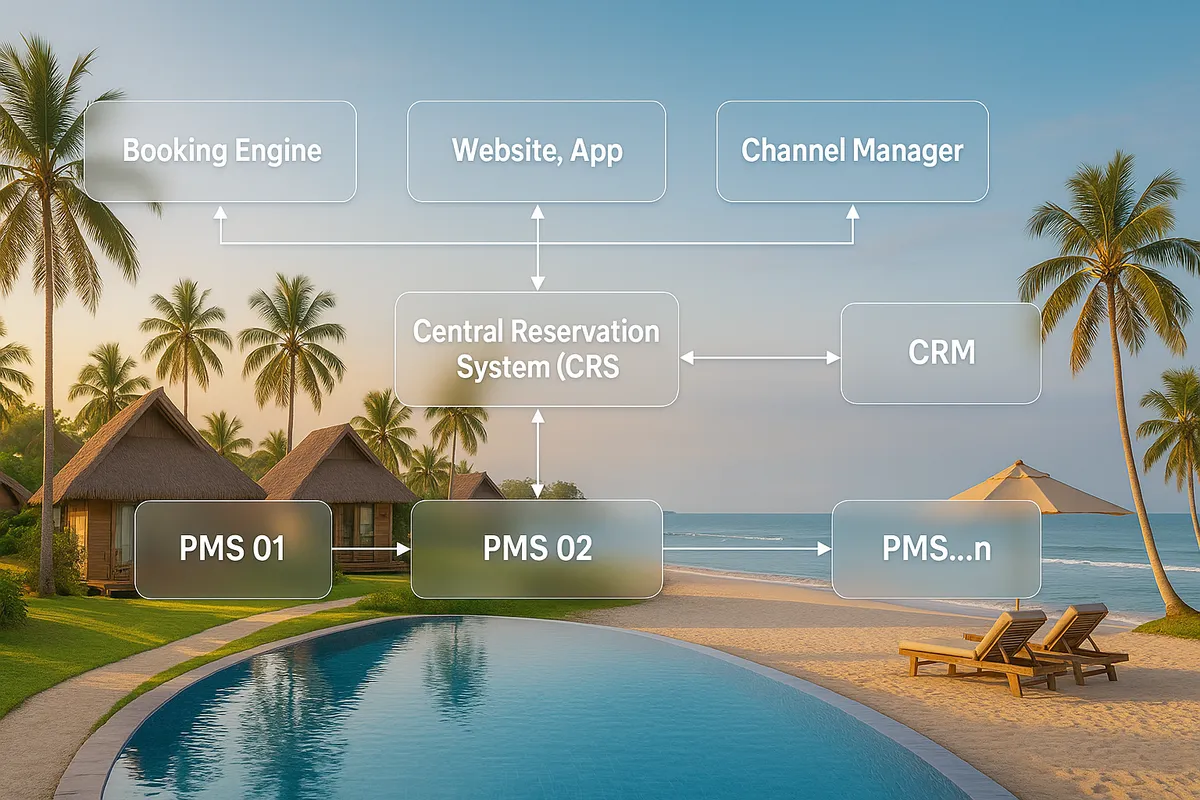Famous ancient churches in Vietnam to check-in
- Wednesday, Jun 11, 2025, 15:43 (GMT+7)
Famous ancient churches in Vietnam to check-in
In the rush of modern life, where steel and glass dominate city skylines, some places still hold on to their quiet dignity. Among them are Vietnam’s historic churches. These are not just places of worship but architectural landmarks full of character and cultural value. Each brick, window frame, and bell tower carries stories that go far beyond religion. For travelers who appreciate heritage and authenticity, these churches offer an experience that touches both the eyes and the soul.
What makes these churches ideal check-in spots is not only their long history but also the unique blend of Western architecture and local cultural elements. This combination gives them a distinctive visual appeal that inspires creativity and offers a strong sense of place. In many cases, visitors leave with more than just a photo. They carry home a quiet sense of connection to something deep and enduring.
In Northern Vietnam, St. Joseph’s Cathedral in Hanoi is perhaps the most iconic. Located right in the heart of the Old Quarter, this church stands out with its Gothic-style facade, towering spires, and intricate stained glass. Its charm goes beyond architecture. The church is closely linked to city life, often serving as the setting for community events such as Christmas celebrations and seasonal markets. For a peaceful photo opportunity, early morning is best. Around 6 AM, the streets are still calm and the soft golden light falls gently on the grey stone, creating a moody yet elegant look.
A few hours away in Ninh Binh, Phat Diem Cathedral offers something entirely different. Built with stone and wood, the structure reflects both Gothic and traditional Vietnamese temple styles. With curved tiled roofs, massive wooden columns, and wide stone courtyards, the place feels sacred and poetic at once. Autumn is the ideal time to visit, when fallen leaves cover the stone steps and sunlight streams through wooden windows. A helpful tip is to stand beneath the side corridor facing the sanctuary. A low-angle shot from there captures the curved roofs and layered shadows beautifully.
In Central Vietnam, the pink-colored Church of the Chicken in Da Lat draws many for its fairytale-like appearance. Its pastel facade and tall spire stand out against the city’s misty air. While it can get crowded during the day, late afternoon offers the best light. Around 4:30 PM, the sun casts long shadows and softens the building’s colors. For a more creative angle, take a step back and shoot from behind the side wall. This keeps people out of your frame and highlights the height of the bell tower under the changing sky.
Further south in Hue, Phu Cam Cathedral brings a more modern feel. Designed by Ngo Viet Thu, the same architect who created the Independence Palace in Ho Chi Minh City, the church features bold geometric forms in concrete and glass. Despite its minimal design, it has a quiet power that stands out. Summer is a particularly striking time to visit. Red flame trees in bloom create a vivid contrast with the cool gray stone, resulting in photographs that are rich in color and emotion.
In Ho Chi Minh City, Notre Dame Cathedral is one of the most photographed churches in Vietnam. With two towers reaching over sixty meters and a red brick facade made without plaster, the building glows in the morning light. Since it has no fence around it, the surrounding space opens up wide for shooting. For clean and balanced photos, consider visiting around 7 AM. From the second floor of nearby cafes, you can get a full view of the front, with minimal background clutter. Another great tip is to try a side view from Nguyen Du Street, which gives you a rare diagonal angle that includes both the towers and the open space.
In the Mekong Delta, Tac Say Church in Bac Lieu stands out for its calm and peaceful beauty. Instead of Gothic designs, it features a roof curved like traditional Southern Vietnamese temples. The plain white walls add a sense of purity and stillness. Arrive before 7 AM for the best photos, when the grounds are quiet and the light is soft. Behind the church, there is a small path leading to tall coconut trees. From this angle, you can frame the bell tower with a natural green backdrop that few people capture.
Other churches that deserve attention include Hung Nghia Church in Nam Dinh, Sacred Heart Cathedral in Buon Ma Thuot, and Can Tho Cathedral. Though they are not as famous, they offer deep cultural value and unique visual elements. From faded murals to custom-designed windows, each location has its own voice. Visiting during key events like Easter or Christmas can add an entirely new layer to your visit. Local communities decorate with flowers and lights, people wear traditional clothing, and ceremonies bring these places to life in a way that few other settings can match.
When visiting churches, respect is essential. These are active places of worship. Dress modestly, avoid noise, and do not take photos during services. Choose classic and tasteful clothing that complements the background. Flowing dresses, linen shirts, or the traditional ao dai always work well and maintain a respectful tone.
Here’s a creative tip that is rarely mentioned. Bring a small hand mirror. When placed at the right spot under a stained glass window or on a marble floor, the reflection can create stunning effects. The mirror captures patterns and light from angles the camera alone cannot. This simple tool can add a surreal and magical touch to your photos and is often used by professionals who rarely share the trick.
Vietnam’s historic churches are more than photo spots. They are living symbols of resilience, culture, and community. Each structure tells a story that blends spirituality with design, tradition with innovation. Capturing them through your lens is not just about composition or lighting. It is about framing a sense of timelessness that lives on quietly in the midst of change. For travelers in search of meaning and beauty, these churches offer both in full measure.

 CHECKIN.VN
CHECKIN.VN








Share on